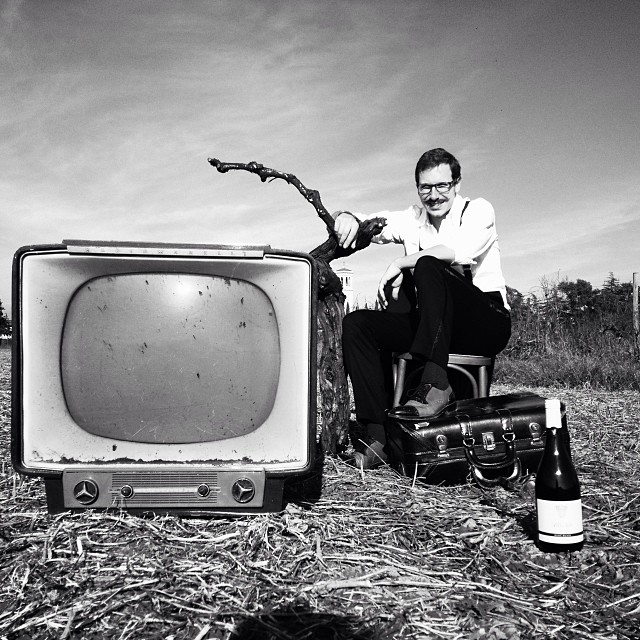
Skin contact wine refers to wine where the white grapes have been macerated on the skins (as if they were red wines). The process of maceration creates a markedly different wine than traditional white winemaking where the juice is pressed and the skins discarded quickly. Grape skins contain tannins, phenolic compounds and pigment that add color, flavor and texture to the wine that during the period of maceration, are naturally extracted.
Often referred to as "orange wine" skin contact wines actually range in a variety of hues from pale yellow to pink to deep amber. Color is determined by the grape variety, the time of harvest, as well as maceration time and winemaking styles. Similarly, tannin levels vary from hardly perceivable to heavily tannic.
Although skin contact white winemaking dates back centuries in regions such as Friuli-Venezia Giulia, Slovenia and thousands of years in Georgia, the technique lost favor around the 1950s when a fresher style of white wine took over the market and producers focused on fulfilling this demand. These regions produced skin contact wines with indigenous grapes such as Pinot Grigio, Friulano and Ribolla Gialla. In recent years skin contact wines have seen a resurgence not just in northeastern Italy and its surrounding border, but in wine-producing countries around the world.
According to Doug Wregg in Simon J. Woolf's book Amber Revolution, "The future of skin-contact wines looks very healthy. Whilst some commentators say they are merely a fad, we are seeing more and more growers in every wine-producing country either experimenting with, or fully espousing, this style of winemaking."
Grape Collective talks with Alessandro Job of Villa Job about his journey into skin contact winemaking in Friuli.
 Christopher Barnes: Alessandro, tell us a little bit about Villa Job. How long have you been making wine?
Christopher Barnes: Alessandro, tell us a little bit about Villa Job. How long have you been making wine?
Alessandro Job: Oh, it is a very long story. We started eight years ago, more or less. I started alone because I was in Milan working in finance because I have a degree in management and engineering. Then I met my wife Lavinia (photo below) in Milan too. I decided to move to Friuli when my grandfather died. Before that, I believed that Milan would be a great place for me to stay to find a good job. My grandfather, he had this house there for like a vacation. So he organized this house where there were around six hectares in one yard and 20 hectares of organic corn and then a little bit of forest and a river.
And so we said yes but why don't we try to change our life because neither of our parents wanted to continue this kind of work. And so we jumped completely to another world, but we knew nothing about wine because my grandfather, he just sold the grapes. He said to the family that he shared the house so please it's mandatory to me that you try to continue the organic way and then you could do what you want. So you have to continuously work in the best way that you can. And so at his death before I moved out, I had to thank my old boss in my work because he told me, "Yes, you can do it." And also my parents because they said, "Yes we can help you in this new adventure." And so I said, okay, but now what is the meaning of a winemaker? Because what I understood is that everybody could produce wine. Everybody can just press and put some juice in the bottle. But the difference and the difficultly is to put in the bottle, the story, the terroir, the culture. 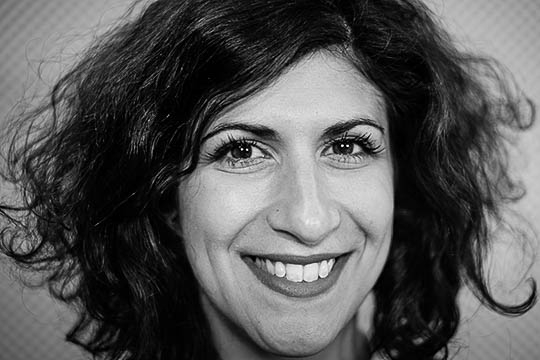 It's very difficult. And so I spent around five years to understand that, and I read about it, I studied a lot and I made a different kind of trip to France and Italy to understand the concept. But you know what I mean, the concept of the different ways of the Pinot Grigio or the Sauvignon and more. So I tried to catch everything, how I can do it. So some people ask exactly how and where I learned about wine. They see that I am strict. People speak with the chef, speak with the people that sell the wine, or the people who import. So these people, they think most of the time that I just produced the wine in the bottle and that the work is finished because I don't care about the commercial part.
It's very difficult. And so I spent around five years to understand that, and I read about it, I studied a lot and I made a different kind of trip to France and Italy to understand the concept. But you know what I mean, the concept of the different ways of the Pinot Grigio or the Sauvignon and more. So I tried to catch everything, how I can do it. So some people ask exactly how and where I learned about wine. They see that I am strict. People speak with the chef, speak with the people that sell the wine, or the people who import. So these people, they think most of the time that I just produced the wine in the bottle and that the work is finished because I don't care about the commercial part.
It's important that the wine that's sold could be different, I think because everything is changing. All the wine that was made 20 years ago and also the pairings are not exactly the same as they are today. So the culture about food is different. Also, what the people think about food and wine is completely different. And so we are free. We have free minds because we have nothing, we have no market, we have nothing to respect. And so we started with some professional people that helped us to produce wine.
So always an organic wine that was very classical. I respect all wine, but I say classical meaning if I have the correct acidity, if I have to filter the wine, that for me is classical. And then they say, "Okay, this is good." But every day that they tasted my wine when I went to Milan or Rome or wherever, the people would say, "Oh, you like this one, try that one please." And so once I tried the wine that was suggested to me, we understood that what we've been thinking about our wine is not exactly where we wanted to go because it was not exactly the expression of our terroir but more what the market wanted. So we understood that there is the objective wine and subjective wine.
Objective is the wine that all the people would like to drink. Subjective is a more personal wine, a personal trip. So it's a more intimate way to produce and to speak with the people. So something that comes from inside of us. And so that is why during the last three years we decided to take out everything from the wine because we understood after we read Steiner and other philosophies about natural wine that what is very important is to understand exactly what we are looking for. And time and terroir for us are very important.
So time is to respect the season and to respect nature and what she can give to us. And time because we are not in a hurry to put all our wines in the bottle immediately just because the market needs it, because probably the wine is still not ready. And then we started to cut out everything so now we just make wine with simple juice. So we're not correcting the acidity, we are not filtering the wine. So this is not the best wine in life because we have just tried to produce wine. We don't know if it's good or not, but this is something that is very personal.
It's very linked with our soul and our mind because we would like to give the opportunity to people to understand that in Friuli Grave where we are, we are on the border between Collio and Grave. We are Grave because there is a border but our terroir is closer to some parts of Collio instead of Grave. 
Well, let me ask you specifically about the terroir of your estate and how it compares to some other parts of Friuli.
We're studying our terroir because it's complex. As I told you, we have six hectares just in one block then there are all the corn fields, there is a little forest and there is a river. But in that six hectares we found five different kinds of terroir. And so with my wife, we tried to understand the one where we wanted to start and how the vines' behavior and the wines could be different. So we make all micro vinification. We did a lot of research about that, and we found also some documents that we posted on our website where there are some geologists who did research on it too. So, our terroir is around three square miles, something like that, it's called the terrace, the high terrace. Why? Because it's a long hill. So we are a little bit higher than Collio, okay not the hill of Collio of course.
But there you can find different kinds of terroir probably because at one time the river that we have to our left crossed at exactly in the middle. So we have a lot of limestone. We have lots of marls. We have clay. And so in the beginning I didn't understand, but when I started as I told you, there was a professional that helped me and said in your terroir the Pinot Grigio grows very well. I said well that's good. I had believed that I could just cultivate potatoes or something like that and not wine, not grapes, because the culture where people told me that the good wine is just made in Collio, not in Grave. Grave is for the quantity, not for the quality. And so once someone who has made a lot of bottles, so not like an artisan producer, says, "Hey, you have a great Pinot Grigio," I need to study the terroir.
Then there are some people in Friuli who are very interesting because they have a lot of knowledge about the terroir, so I tried to speak with them too and I also met the people of Corso. They have incredible terroir completely different from ours, completely different from the people that live on the border with Slovenia, and so different terroir means different production in the wine. So we have to find the complexity of the grape in our vineyard.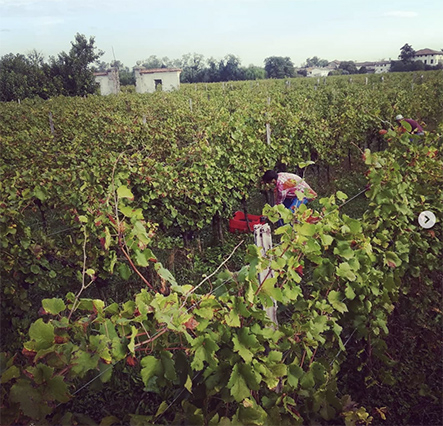 And so, when we started, a lot of people would say, "Remember you have to prune, remember you have to cut the grass frequently because it must be very short or you will have problems during the season and you will have to make a lot of treatments with the copper and sulphur and then you have to take out all the leaves from the grapes because the grapes have to stay under the sun perfectly and you have to cut everything." And they say, "Oh, we do that because everybody says to do that.” Then I found some people who say, "No, I don't believe in that." We say that it's better if we try to study more and more to find exactly our own way.
And so, when we started, a lot of people would say, "Remember you have to prune, remember you have to cut the grass frequently because it must be very short or you will have problems during the season and you will have to make a lot of treatments with the copper and sulphur and then you have to take out all the leaves from the grapes because the grapes have to stay under the sun perfectly and you have to cut everything." And they say, "Oh, we do that because everybody says to do that.” Then I found some people who say, "No, I don't believe in that." We say that it's better if we try to study more and more to find exactly our own way.
We're just pruning and then we understood that the vine was born in the forest. He didn't work for food to make production and so we said, "Okay, we don't want to touch you, we want to increase the biodiversity to plant some seeds and to cultivate all these spontaneous herbs." To time the cutting of the grass to respect that, to respect the moon, to respect time as we spoke about before. Also to increase the number of insects in the vineyard, to work with the bees. So also the biodiversity that you can create with the flowers and also the indigenous yeast. I use just natural yeast but this is my choice.
I don't think that this is the best choice, it's just my choice. That is very important and so what we are looking for when we bring the grape inside the cellar and we make the skin contact, is for all this biodiversity to appear in our wine. Lavinia, she's very smart to give the spontaneous herb taste to the people. There are a lot of herbs. The people smell and taste them and then they say, "Well, yeah, it's true, you told me now we can feel it in your wine."
And so when we first started we just pressed all the grapes without skin contact, then there was a producer who told us, "Why are you spending all this time in the vineyard to respect nature, to respect your product, and then you go into the cellar and you want to lose 50% of your work?" Because 50% of your work and all your terroir and all the diversities is situated on the skin. And I say, "Oh yeah, this is true, let me try." And so we started and now we're focused with the skin contact maceration and we made short and long skin contact maceration.
So Alessandro talk a little bit about skin contact and the culture of skin contact in Friuli.
It's very hard to explain for me, because there are more important producers than us that have done this for a long time. And so if I try to explain something then I hope I do not offend those producers. Before I married Lavinia, my friend organized a trip in Georgia to visit some producers to taste and drink the wine made in amphora. So what I understood that it is a completely different kind of drinking. It is complex, richer in all the terroir. 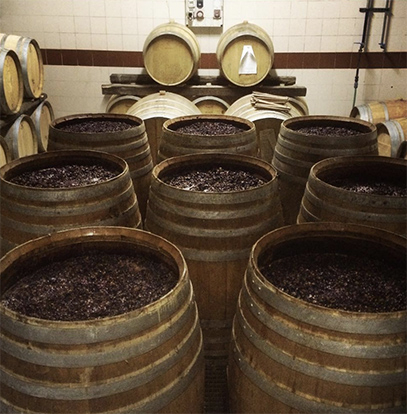 And then there are producers that think that all the concentration that you can find in the vineyard on the grape you have to maintain in the cellar. They are more focused on a high concentration in the grape. So they cut off the leaf, they cut the fruit because they think that this is the correct way to respect the terroir and the time, so they think that all the concentration and all the material and the terroir can appear in this way on the grape. And that I think is amazing because in the beginning when I started to drink this kind of wine it was very strange because I said, "I don't know." I remember the first time that some people gave me a glass of orange wine I said, "That is nice, I don't understand that one. Why is it not clear? It's unfiltered." But now I see my idea is completely different.
And then there are producers that think that all the concentration that you can find in the vineyard on the grape you have to maintain in the cellar. They are more focused on a high concentration in the grape. So they cut off the leaf, they cut the fruit because they think that this is the correct way to respect the terroir and the time, so they think that all the concentration and all the material and the terroir can appear in this way on the grape. And that I think is amazing because in the beginning when I started to drink this kind of wine it was very strange because I said, "I don't know." I remember the first time that some people gave me a glass of orange wine I said, "That is nice, I don't understand that one. Why is it not clear? It's unfiltered." But now I see my idea is completely different.
All of them are very good friends of ours and so it's very difficult for us to explain, to speak for them, because they started around 30 years ago. There are very few Friuli producers who say, "Okay, now we have to stop producing wine in barrique, we have to stop it. Because this way does not respect our terroir."
Then there was one producer who went to Georgia, and he understood the culture and he spoke with another producer and they decided to change all this type of vinification of the wine. But in the beginning, if you spoke with all of them, they would say it was not easy because the people don't care about that. They don't believe in that project. They don't believe it that the concentration and the wine were meeting that way. They say, "No, this is not wine. This is difficult wine."
And so a lot of them until probably 10 years ago, they had to find a second way to sell the wine, or like sell vegetables, just to cover the costs because they have a notion. They understood that the wine must be aging in the cellar because they need time. It is true for us it is quite difficult but we are trying to make as much aging as we can but sometimes it's very difficult. Probably we are not as strong as them in our minds, they are stronger than us. So now all the people, they love that project but they told me it was very difficult then because when they started people didn't care. They didn't believe in it.
Now you can go to a restaurant in New York and there is a section on skin contact wine, right?
Yes.
And it's become part of the accepted culture. And for many years that wasn't the case. But talk a little bit about the texture and the flavors that you get in a skin contact wine relative to traditional winemaking. How is skin contact wine different?
This is what we've seen but it's probably not true for everybody. We can speak about the Tokai needing a more classical way, so where you can focus more on the fruity and the floral parts. And so we're looking for the maturity of the grape and thinking of the one for longer aging. For us the two Tokai that we made, the '15 and '17 are very different. In '15, you can taste more or the fruit and flowers but in '17, you can taste instead all the herbs that we have in the vineyard.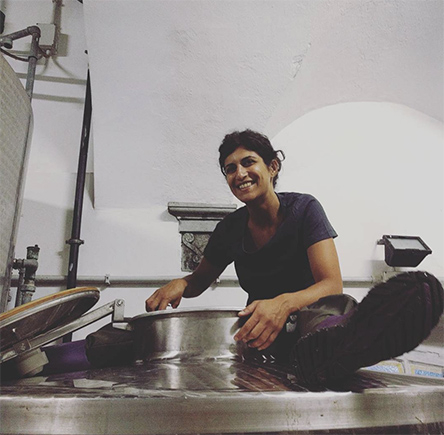 So I don't know if I can say it is better or not, because we drink all wine. And so we respect all kinds of making wine because also like I told you, we are free. We didn't have the market before so we don't have any market to respect. We didn't have a family where we have to take some money because we have a child or something like that. So we did a lot of experiments and now we are very happy because our wine speaks to our terroir.
So I don't know if I can say it is better or not, because we drink all wine. And so we respect all kinds of making wine because also like I told you, we are free. We didn't have the market before so we don't have any market to respect. We didn't have a family where we have to take some money because we have a child or something like that. So we did a lot of experiments and now we are very happy because our wine speaks to our terroir.
But also I think it's difficult to speak about a skin contact wine because then they think that all the skin contact wine must have a mission. It is not as simple as to say I put the wine and make the skin contact maceration, that this is skin contact maceration. Yeah, it's true you can do it but probably that wine could be similar to the other grapes that you tried to make in skin contact. So is this good, or not? Is your terroir speaking this way or are you not focused on your terroir but just more focused on the skin contact concept? So this is difficult. And also I'm in engineering as I told you, so for me when there is a problem for each single problem we need analysis so we need some data.
So we decided to make micro vinification for every wine that came from different kinds of terroir to understand year to year, what the differences are from each terroir. So also for the Pinot Grigio and the Tocai we made five, six different skin contact macerations and we also did it with no skin contact maceration, because we wanted to see also all the biodiversity without the skin and how it develops in the same grapes made from the same time of harvest. So this is what we say is analysis.
And how do you decide whether you do 24 hours of skin contact or three weeks of skin contact? Like how do you decide what the right amount of time?
So tasting you stay there, you punch the grape and then you taste. And normally it's not me, but it's my wife's role because she has a great nose and so she says, "Hey I see that now the taste is more focused on this kind of spice or flower or something like that." Then I try and say, "Okay, but can we go a little bit longer or not?" And so sometimes we decide to make one part made with three days. One part we do longer and then after several months we can taste the differences. For example, with the new Untitled, one part will be made with three days and the other part of it is made with two weeks. So we can decide to make a longer harvest.
So also the feeling, the flower, the tasting, everything was different in the '17. And so we don't have a rule. The people that make skin contact on the border, they told us, "Don't have fear, you have to go your way, don't stop it." We don't know. That is why we like to try because what are we are looking for is not to have the high concentration, but to have the high concentration of all the kinds of herbs that we have in the vineyard and don't want to lose.
So now we did it, this kind of two different agings we can see of skin contact just to understand when what starts to appear is more the fruit instead of the flower or the herbs. That is what's important to us. But this is exactly how we work. Probably other producers might say no because for them what's most important is all the concentration of the fluid that you can have in the grape so you have to make very long skin contact maceration. I don't know, I can speak just for us, that is the point.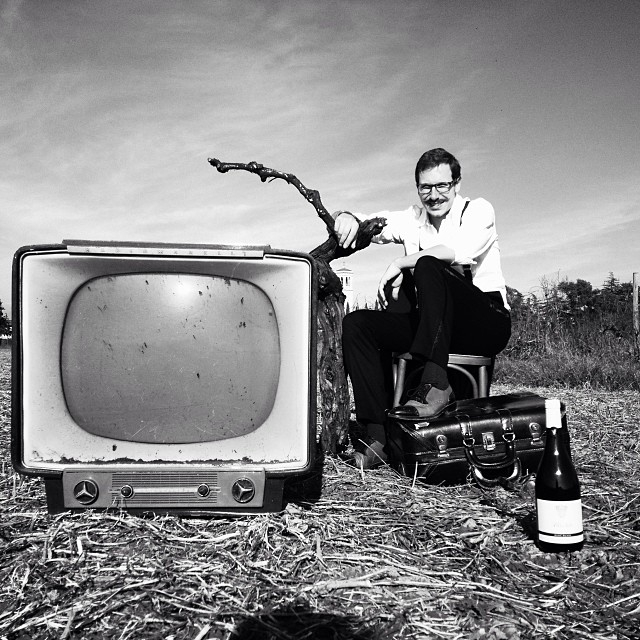 And talk a little bit about some of the grapes that you work with and the wines that you make. You make Ramato.
And talk a little bit about some of the grapes that you work with and the wines that you make. You make Ramato.
Yes. It is not very traditional, Ramato, because when I first went back in the vineyard, I found six hectares and a half. But a lot of the grapes in a lot of the vineyard is Pinot Grigio. And so with my father, we spoke a lot about that because he helped me with the balance to cover the cost. He said, "Okay, but it's important that we have to try to sell the wine to the big companies so you can have some revenue to cover the cost." So we started with the classical Pinot Grigio because I think 90% of the production of the Pinot Grigio in Friuli is made without skin, just pressed, because all the big companies, they need that one. So we started that way.
Then we arrived at making skin contact. So we call it Ramato or if you want to call it, I don't like to call it orange, because it's always Ramato, but color is more red than Ramato. And so we started from there and now also the Sauvignon Blanc.
And we understood that with Sauvignon Blanc we don't like it too aromatic. So that is why we are looking to find a different kind of Sauvignon. And we found in Samur (in the Loire Valley) where a lot of people they have the Sauvignon but they don't care because they have Chenin Blanc and so they're thinking the Sauvignon is like the Chenin Blanc. So we started to make this kind of production before without skin contact. Then we make skin contact and this Sauvignon for us is the most complex wine that we have. Now in the cellar it was very funny because the people would come to you and say, "Okay, you can taste this one has one day on skins, this one has two days on skin, this one is just pressed, this one has very long skin contact." You taste four different kinds of Sauvignon that came from the same vineyard. But all the people say, "But they are completely different? Why?" It is the way we work and the balance with nature we find in the vineyard. So what we are looking for is the respect of the terroir.
Alessandro, you have some very unique labels. How did you come up with the concepts for the labels?
Because probably you didn't see our classical label that we had until recently, so we're really very classical. We started with the classical like yellow label with a big gold logo because the name was Villa Job, that is my surname. And then everyone said, "Yes, this is your label but nobody understands that behind this label there are two young winemakers." And so we said, "We probably need to decide which kind of label we should do." So we spent around eight months and we decided every wine and label would have the name and also a picture. So every label has a meaning. 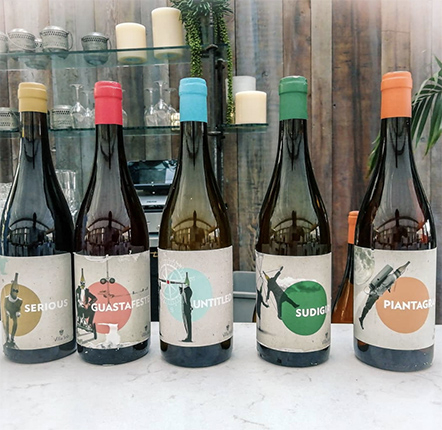 For example, this one is called Untitled because we can't (legally) call it Friulano Tokai and we respect the Tokai a lot and we liked the name of Friulano. We say if the people don't find a good name to replace Tokai, it is better not to change it. So that is Tokai and these are two people that are looking for something but they don't know what, that is the point.
For example, this one is called Untitled because we can't (legally) call it Friulano Tokai and we respect the Tokai a lot and we liked the name of Friulano. We say if the people don't find a good name to replace Tokai, it is better not to change it. So that is Tokai and these are two people that are looking for something but they don't know what, that is the point.
And so for example, the Pinot Grigio, we call it Piantagrane, or Troublemaker, because all the people and a lot of friends and winemakers call Pinot Grigio a stupid grape. They say come on, stop it, we have Ribolla Gialla we have Tokai. So we say, okay, we all like to speak a lot about the Pinot Grigio, so you are a troublemaker. That's the point. And so we have to find a guy with a rocket, that's on his back there go to the moon to say we don't care, we are happier.
Or for the Sauvignon there is me and her and we are hanging from a cloud and we are jumping, and we call it Sudigiri. We say we're over the moon or elated because when we find this kind of Sauvignon we say, "Well this is amazing." This is exactly what we are looking for." Not because we are looking for this kind of Sauvignon but because it's completely different. And so we said, "Yeah, this is the Sauvignon that came from our terroir and it's different." Yes, of course it is.
So for this kind of process, we had to spend a lot of time. So we built and destroyed a lot of labels. And then also when we went to Milan and Rome and tasted the different kinds of wine from French producers, Spanish producers, Portuguese producers, we understood that the winemakers, they wanted to explain, they wanted to speak about their wine in a different way that was more funny, more easy. So fewer rules. Speaking more like a winemaker and to remind the people that when you drink a bottle it is a moment of pleasure, it is not a moment of study. So it's not mandatory that you stay there to smell all the flowers and examine the color. Come on, you have to drink the wine because the world was born with wine and food; the history of the world was made with wine and food on the table.
And so in that moment the people, they don't care which bottle was in the middle, they are more focused on the friends that are seated at the table. And so for us, we like to make a complex wine, but one that is easy drinking, because for us it's more important that the people can talk with each other, and they're not thinking all the time, "Oh, this is a fantastic grape, this is a great wine." Then in the end if they say they like it, we are happy.
Banner by Piers Parlett, video by Max High-Cuchet














